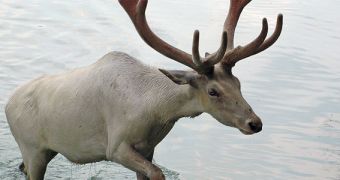According to the conclusions of a new study by paleontologists at the University of Michigan, it would appear that the average body size of mammals has decreased every time a global warming event occurred. The team is convinced that this is enough evidence to support a cause-effect hypothesis.
For this research, the group studied ancient global warming events. In at least two instances, mammal body sizes decreased markedly as average temperatures increased, and climate patterns changed. This suggests that mammals may again start becoming smaller, as the world heats up.
For years, experts have known that an event called the Paleocene-Eocene Thermal Maximum (PETM), which took place some 55 million years ago, led to a global dwarfing of large mammal species. The new investigation found a similar trend during another warming event, which occurred some 53 million years ago.
The investigation suggests that a decreased body size is, in essence, a common evolutionary response to hyperthermals, or extreme warming events. If that is true, then scientists can potentially predict when and how mammal species will decrease in size in the future.
Details of the work were presented in Los Angeles on November 1, at the annual meeting of the Society of Vertebrate Paleontology. The team included experts from the California Institute of Technology, the University of New Hampshire, and the Colorado College.
“The fact that it happened twice significantly increases our confidence that we're seeing cause and effect, that one interesting response to global warming in the past was a substantial decrease in body size in mammalian species,” says Philip Gingerich, a U-M professor of earth and environmental sciences.
“Interestingly, the extent of mammalian dwarfism may be related to the magnitude of the hyperthermal event,” adds UNH investigator Abigail D'Ambrosia, a member of the research team.
UNH team member Will Clyde argues that figuring out how mammalian body sizes and climate change are linked could allow investigators to predict the transformations that may occur in modern animals in response to the shifting climate patterns our planet is currently experiencing.

 14 DAY TRIAL //
14 DAY TRIAL //